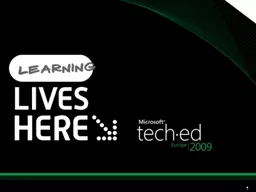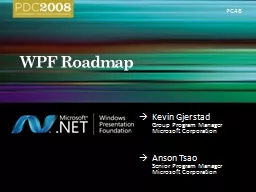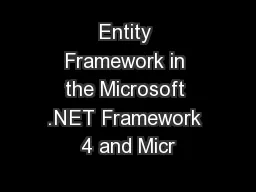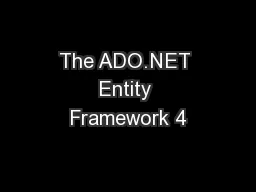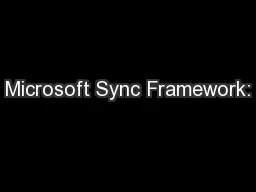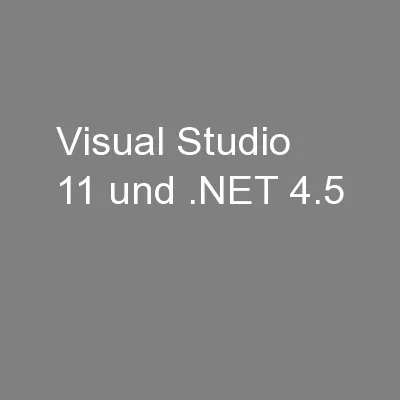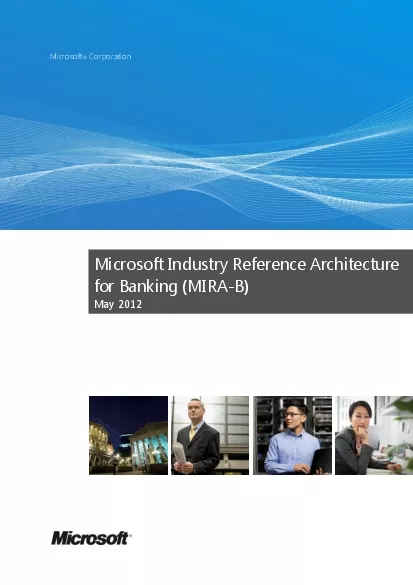PPT-Architecture and Application of Microsoft .NET Framework 3.
Author : trish-goza | Published Date : 2016-07-11
for Data Protection Rafal Lukawiecki Strategic Consultant Project Botticelli Ltd Session Code ARC303 Objectives And Agenda Outline data protection requirements Explain
Presentation Embed Code
Download Presentation
Download Presentation The PPT/PDF document "Architecture and Application of Microsof..." is the property of its rightful owner. Permission is granted to download and print the materials on this website for personal, non-commercial use only, and to display it on your personal computer provided you do not modify the materials and that you retain all copyright notices contained in the materials. By downloading content from our website, you accept the terms of this agreement.
Architecture and Application of Microsoft .NET Framework 3.: Transcript
Download Rules Of Document
"Architecture and Application of Microsoft .NET Framework 3."The content belongs to its owner. You may download and print it for personal use, without modification, and keep all copyright notices. By downloading, you agree to these terms.
Related Documents

